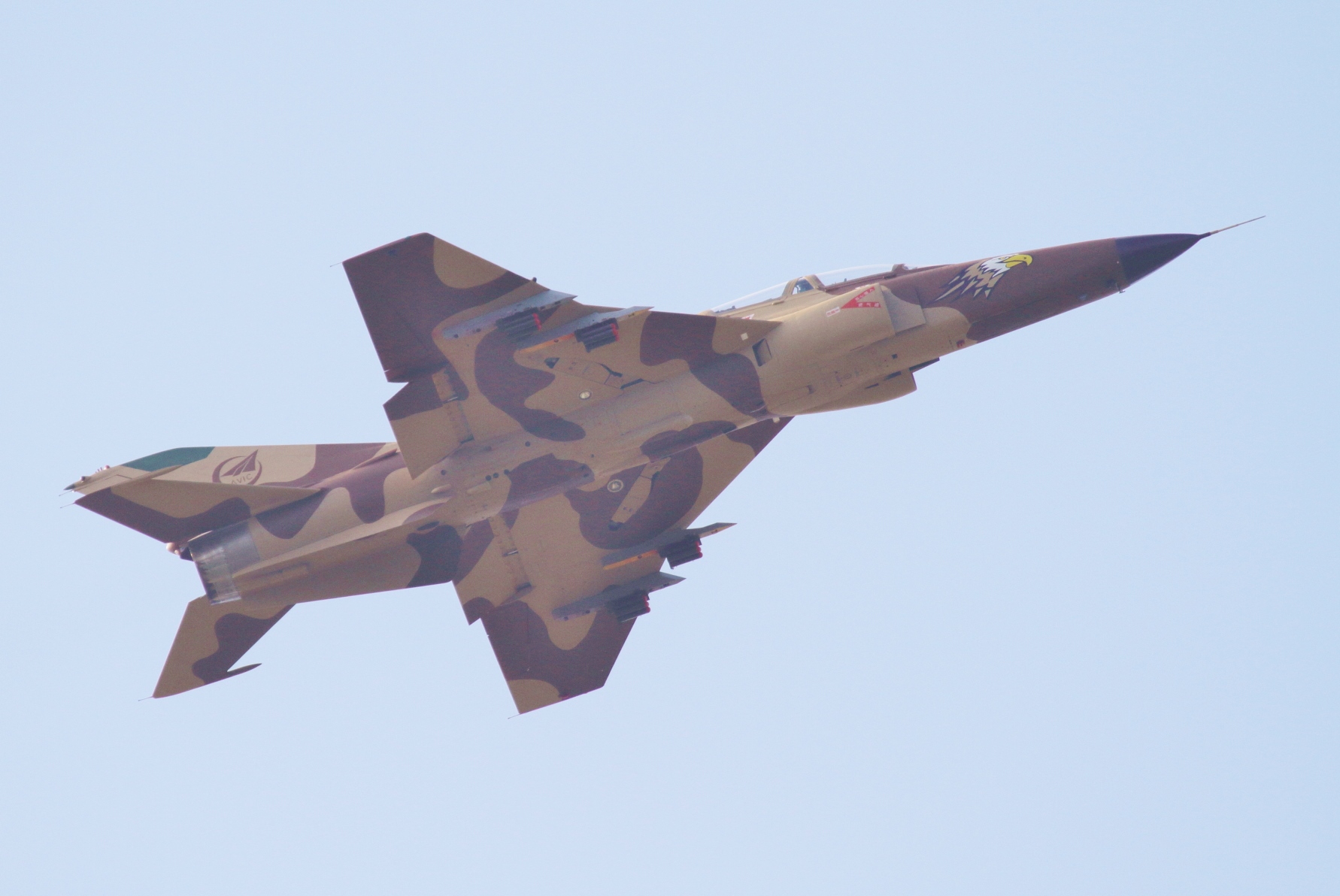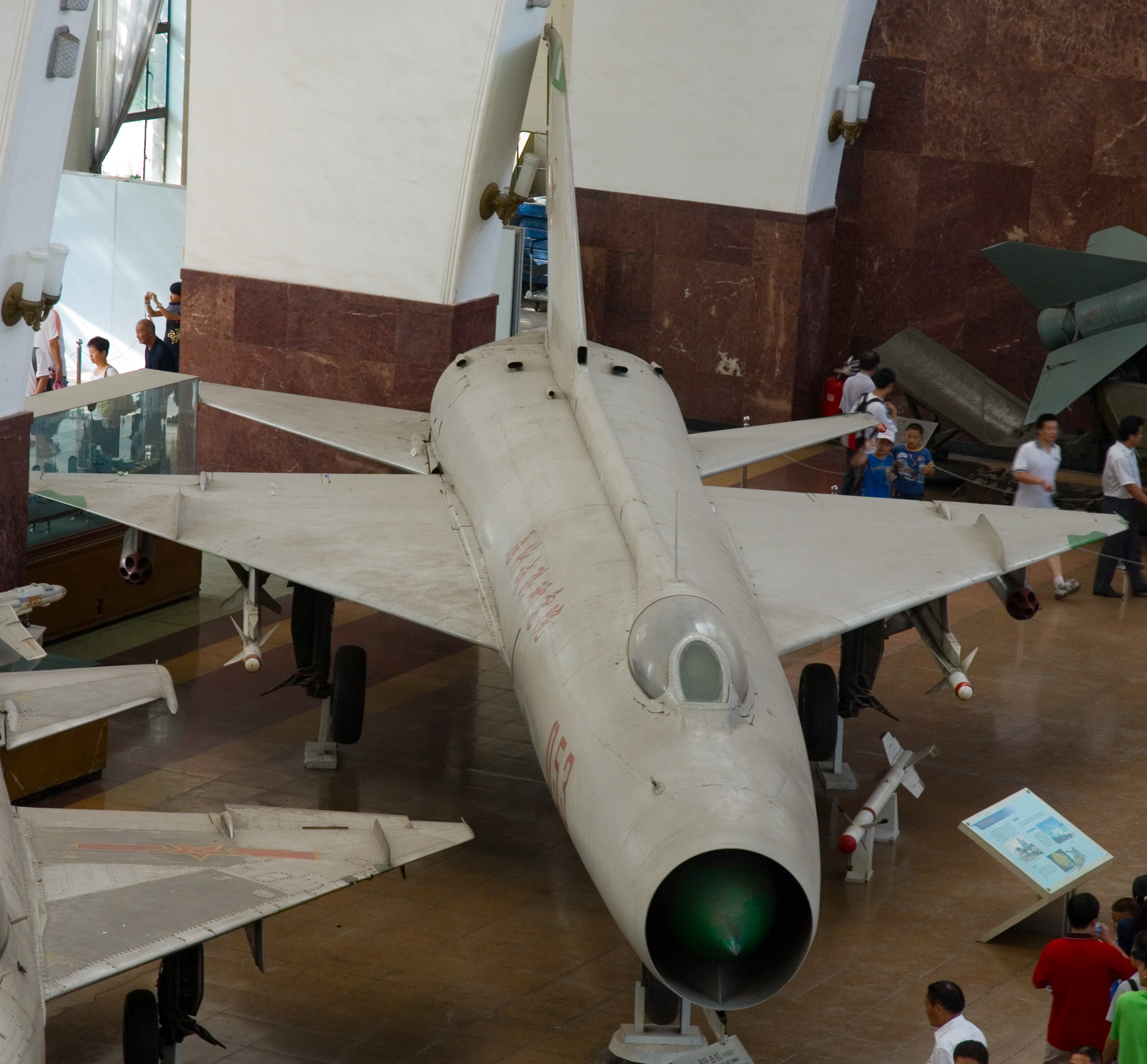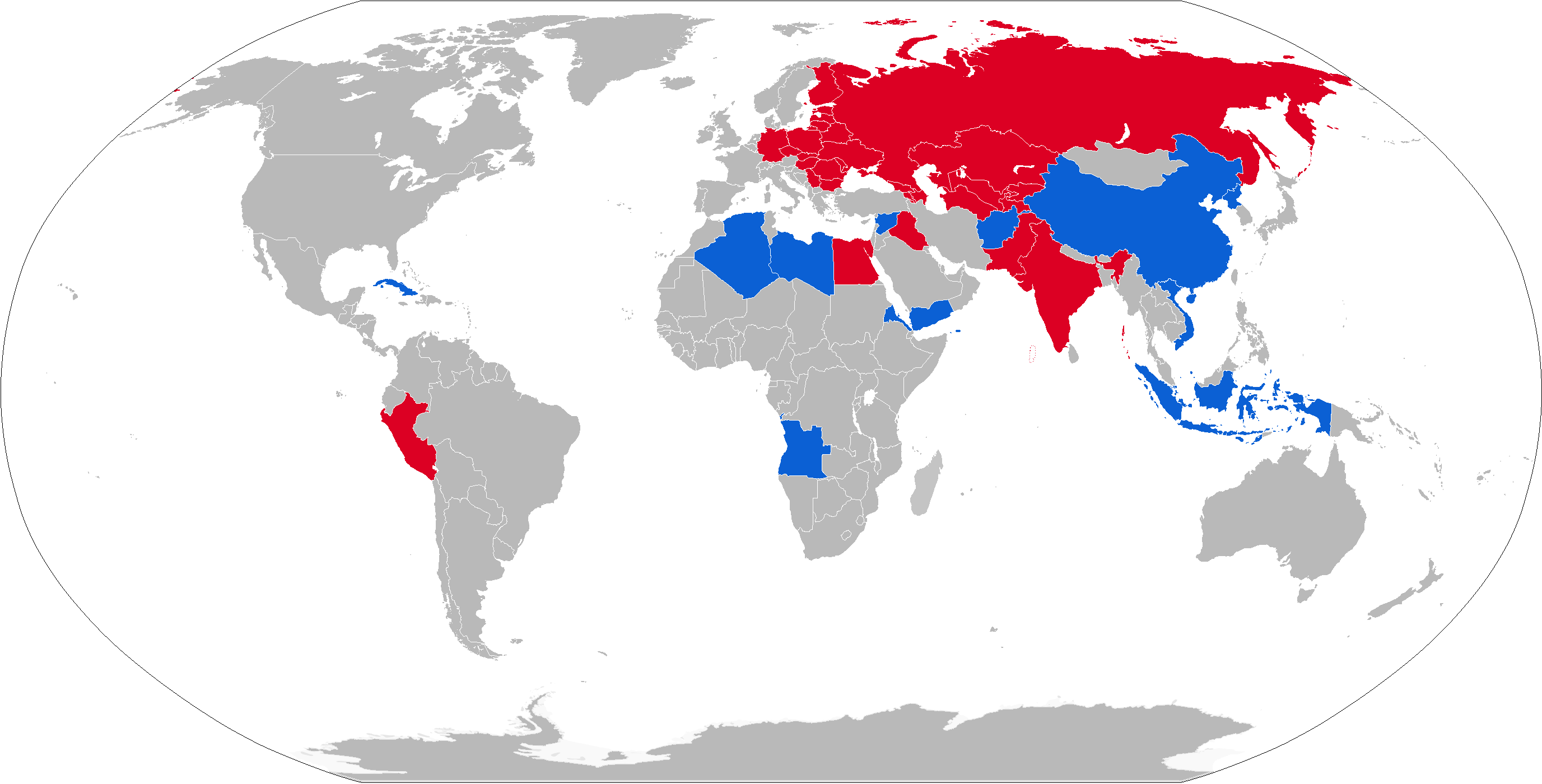|
Mikoyan-Gurevich Ye-8
The Mikoyan-Gurevich Ye-8 was a supersonic jet fighter developed in the Soviet Union, intended to replace the MiG-21 (originally named ''MiG-23''). Only two prototypes were built in 1960-61. The original MiG-21's air intakes were moved under the fuselage, freeing up the nose where a larger and more powerful radar, able to deliver longer range air-to-air missiles, could be built in. Canards were built to both sides of the nose, in front of the cockpit, (the horizontal stabilizers of MiG-21 were left at their original position). The two prototypes flew in 1962. On September 11, 1962, the Tumansky R-21F-300 engine, also under development, exploded in midair at a speed of Mach 2.15. Test pilot Georgy Konstantinovich Mosolov, then one of the leading Soviet test pilots, was severely injured by debris from the compressor and had to eject at Mach 1.78. Due to unsolved technical problems, the aircraft's development was abandoned; some parts were used on the MiG-23 The Mikoyan ... [...More Info...] [...Related Items...] OR: [Wikipedia] [Google] [Baidu] |
WikiProject Aircraft
A WikiProject, or Wikiproject, is a Wikimedia movement affinity group for contributors with shared goals. WikiProjects are prevalent within the largest wiki, Wikipedia, and exist to varying degrees within sister projects such as Wiktionary, Wikiquote, Wikidata, and Wikisource. They also exist in different languages, and translation of articles is a form of their collaboration. During the COVID-19 pandemic, CBS News noted the role of Wikipedia's WikiProject Medicine in maintaining the accuracy of articles related to the disease. Another WikiProject that has drawn attention is WikiProject Women Scientists, which was profiled by '' Smithsonian'' for its efforts to improve coverage of women scientists which the profile noted had "helped increase the number of female scientists on Wikipedia from around 1,600 to over 5,000". On Wikipedia Some Wikipedia WikiProjects are substantial enough to engage in cooperative activities with outside organizations relevant to the field at issue. For e ... [...More Info...] [...Related Items...] OR: [Wikipedia] [Google] [Baidu] |
Georgy Konstantinovich Mosolov
Georgy Konstantinovich Mosolov (russian: Георгий Константинович Мосолов; 3 May 1926, in Ufa, Bashkortostan, Soviet Union – 18 March 2018) was a Soviet Russian test pilot. He attained the rank of ''Polkovnik'' (Colonel). He attained two world air speed records, in either the Mikoyan MiG-21 or the prototype Mikoyan Ye-66, as well as one altitude record. Colonel Mosolov was awarded the Hero of the Soviet Union The title Hero of the Soviet Union (russian: Герой Советского Союза, translit=Geroy Sovietskogo Soyuza) was the highest distinction in the Soviet Union, awarded together with the Order of Lenin personally or collectively for ... and the Lenin Prize. Mosolov set air speed records of on 31 October 1959 and and an altitude record of in a Ye-166 has in 1962. Colonel Mosolov also piloted the prototype MiG-21 on its first flight on 14 February 1955.Laukkanen, Jyrki. ''MiG-21 in Finnish Air Force'' (Apali, 2004, Hämeenlinn ... [...More Info...] [...Related Items...] OR: [Wikipedia] [Google] [Baidu] |
Dassault Milan
The Dassault Mirage III () is a family of single/dual-seat, single-engine, fighter aircraft developed and manufactured by French aircraft company Dassault Aviation. It was the first Western European combat aircraft to exceed Mach 2 in horizontal flight,"Mirage III." ''Dassault Aviation'', 18 December 2015. a feat which was achieved on 24 October 1958. In 1952, the French government issued its specification, calling for a , all-weather interceptor. Amongst the ... [...More Info...] [...Related Items...] OR: [Wikipedia] [Google] [Baidu] |
Convair F-106
The Convair F-106 Delta Dart was the primary all-weather interceptor aircraft of the United States Air Force from the 1960s through to the 1980s. Designed as the so-called "Ultimate Interceptor", it proved to be the last specialist interceptor in U.S. Air Force service to date. It was gradually retired during the 1980s, with the QF-106 drone conversions of the aircraft being used until 1998 under the ''Pacer Six'' program.Winchester 2006, p. 55. Development Antecedents The F-106 was the ultimate development of the USAF's 1954 interceptor program of the early 1950s. The initial winner of this competition had been the F-102 Delta Dagger, but early versions of this aircraft had demonstrated extremely poor performance, limited to subsonic speeds and relatively low altitudes. During the testing program the F-102 underwent numerous changes to improve its performance, notably the application of the area rule to the fuselage shaping and a change of engine, and the dropping of the advan ... [...More Info...] [...Related Items...] OR: [Wikipedia] [Google] [Baidu] |
Guizhou JL-9
The Guizhou JL-9, also known as the FTC-2000 Mountain Eagle (), is a family of two-seat supersonic advanced jet trainer and light combat aircraft developed by the Guizhou Aviation Industry Import/Export Company (GAIEC) for the People's Liberation Army Air Force (PLAAF) and the People's Liberation Army Naval Air Force (PLANAF). Development The FTC-2000 started as a GAIEC private venture to develop an inexpensive trainer for fourth generation aircraft. The trainer was revealed at the 2001 China International Aviation & Aerospace Exhibition. The aircraft are reported to be produced at a GAIC assembly line in Anshun, Guizhou. The FTC-2000, as the JL-9, competed with the Hongdu JL-10 to meet the advanced trainer requirements of the PLAAF and PLANAF. The JL-10 is more technologically advanced, but also more expensive, than the JL-9. In 2013, both had entered production. A carrier-landing trainer variant was revealed by Chinese state media in 2011. Designated the JL-9G, it has str ... [...More Info...] [...Related Items...] OR: [Wikipedia] [Google] [Baidu] |
Shenyang J-8
The Shenyang J-8 (Simplified Chinese characters, Chinese: 歼-8; NATO reporting name: Finback) is an interceptor aircraft developed by the Shenyang Aircraft Design Institute, 601 Institute (Shenyang) in the People's Republic of China (PRC). It was conceived in the early 1960s as a low-risk program based on enlarging the Mikoyan-Gurevich MiG-21F, a version of which the PRC was producing as the Chengdu J-7. The original J-8 experienced protracted development due to disruption from the Cultural Revolution; the prototypes first flew in 1969 but the design was not finalized until 1979 with the aircraft entering service in 1980. The J-8II/J-8B (NATO reporting name: Finback-B) was a major development of the J-8 and was essentially a new aircraft. The J-8II replaced the nose air intake and its shock cone with an ogival radome and lateral air intakes to create room for a modern fire-control radar, and used more powerful engines. The aircraft started development in 1982, and was cleared f ... [...More Info...] [...Related Items...] OR: [Wikipedia] [Google] [Baidu] |
Mikoyan-Gurevich I-75
The Mikoyan-Gurevich I-75 was the final design of a series of three experimental swept-wing interceptors developed in the Soviet Union in the mid-late 1950s by the Mikoyan-Gurevich design bureau from their Mikoyan-Gurevich I-3 airframe. All the aircraft in the I-3 program were affected by delays in the development of the Klimov VK-3 turbojet engine, its cancellation and ultimate replacement by the Lyulka AL-7F turbojet engine. Design and development The I-75 was a re-engined and radar-equipped version of the experimental I-7 Mach 2 class aircraft. Work on the I-7U started in early 1956, as a development of the proposed Klimov VK-3 (82.37 kN (18,518.83 lbf) thrust) turbojet powered I-3 prototype fighter. The airframe of the I-3 was modified for the larger and more powerful Lyulka AL-7F after-burning turbojet engine. A short test flight programme ended on 24 January 1958, after which the prototype was rebuilt into the I-75 by fitting an AL-7F-1 that delivered "dry" ... [...More Info...] [...Related Items...] OR: [Wikipedia] [Google] [Baidu] |
Chengdu J-7
The Chengdu J-7 (Chinese: 歼-7; third generation export version F-7; NATO reporting name: Fishcan) is a People's Republic of China fighter aircraft. It is a license-built version of the Soviet Mikoyan-Gurevich MiG-21, and thus shares many similarities with the MiG-21. The aircraft is armed with short-range, infrared homing air-to-air missiles and mainly designed for short range air-to-air combat. The aircraft is also used for close air support. On 30 March 1962, the Soviet Union and China signed a technology transference arrangement pertaining to the MiG-21. Allegedly, while various kits, components, completed aircraft and associated documents were delivered to the Shenyang Aircraft Factory, the design documentation was incomplete, and Chinese designers made efforts to reverse engineer the aircraft. While the two aircraft are greatly similar, areas of difference include the hydraulic systems and internal fuel arrangements. During March 1964, domestic production of the J-7 ... [...More Info...] [...Related Items...] OR: [Wikipedia] [Google] [Baidu] |
K-13 (missile)
The Vympel K-13 (NATO reporting name: AA-2 "Atoll") is a short-range, infrared homing air-to-air missile developed by the Soviet Union. It is similar in appearance and function to the American AIM-9B Sidewinder from which it was reverse-engineered. Although it since has been replaced by more modern missiles in frontline service, it saw widespread service in many nations. Background - the Sidewinder missile During the Second Taiwan Strait Crisis in 1958, Taiwan's F-86 Sabres faced the much higher performance mainland Chinese PLAAF MiG-17s. The MiG-17s had speed, maneuverability, and altitude advantages over the Sabres, allowing them to engage only when they desired, normally at advantageous times. In response, the US Navy rushed to modify 100 ROCAF Sabres to carry the newly introduced AIM-9 Sidewinder missile. These were introduced into combat on 24 September 1958, when a group of MiG-17s cruised past a flight of Sabres, only to find themselves under attack by missile fire. This wa ... [...More Info...] [...Related Items...] OR: [Wikipedia] [Google] [Baidu] |
Turbojet
The turbojet is an airbreathing jet engine which is typically used in aircraft. It consists of a gas turbine with a propelling nozzle. The gas turbine has an air inlet which includes inlet guide vanes, a compressor, a combustion chamber, and a turbine (that drives the compressor). The compressed air from the compressor is heated by burning fuel in the combustion chamber and then allowed to expand through the turbine. The turbine exhaust is then expanded in the propelling nozzle where it is accelerated to high speed to provide thrust. Two engineers, Frank Whittle in the United Kingdom and Hans von Ohain in Germany, developed the concept independently into practical engines during the late 1930s. Turbojets have poor efficiency at low vehicle speeds, which limits their usefulness in vehicles other than aircraft. Turbojet engines have been used in isolated cases to power vehicles other than aircraft, typically for attempts on land speed records. Where vehicles are "turbine-powere ... [...More Info...] [...Related Items...] OR: [Wikipedia] [Google] [Baidu] |
NACA Airfoil
The NACA airfoils are airfoil shapes for aircraft wings developed by the National Advisory Committee for Aeronautics (NACA). The shape of the NACA airfoils is described using a series of digits following the word "NACA". The parameters in the numerical code can be entered into equations to precisely generate the cross-section of the airfoil and calculate its properties. Origins NACA initially developed the numbered airfoil system which was further refined by the United States Air Force at Langley Research Center. According to the NASA website: Four-digit series The NACA four-digit wing sections define the profile by: # First digit describing maximum camber as percentage of the chord. # Second digit describing the distance of maximum camber from the airfoil leading edge in tenths of the chord. # Last two digits describing maximum thickness of the airfoil as percent of the chord. For example, the NACA 2412 airfoil has a maximum camber of 2% located 40% (0.4 chords) from the ... [...More Info...] [...Related Items...] OR: [Wikipedia] [Google] [Baidu] |






